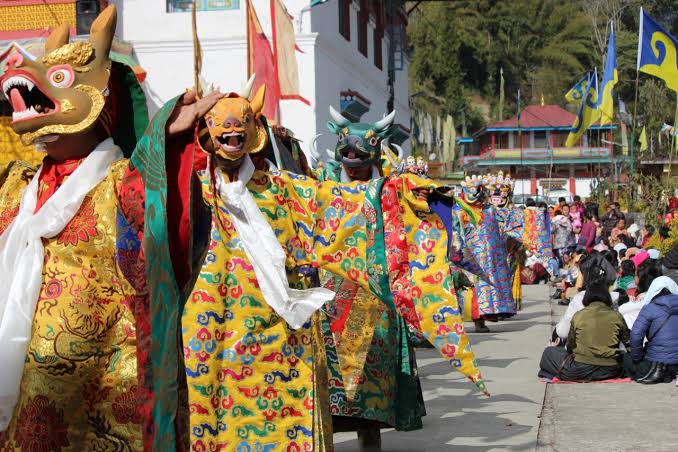The Great Himalayan Exploration is a pioneering initiative dedicated to documenting and safeguarding the rich intangible cultural heritage of the Himalayas. Launched in 2022 in the Eastern Himalayas and expanded to the Western Himalayas in 2024, this ambitious project is a collaboration between the Royal Enfield Social Mission and UNESCO. Through a network of passionate rider-researchers, the initiative seeks to identify and record 200 unique cultural practices, offering a deep insight into the diverse traditions that shape the Himalayan way of life.
So far, over 60 traditions have been documented across eight Eastern Himalayan states and 12 in Ladakh through 24 explorations. These include sacred rituals such as the Bhumthing Prayers for Kanchenjunga, where the Lepcha people pay homage to the sacred mountain through offerings and dances, and the Dzumsa System of Governance, a unique self-governing structure in Lachen and Lachung, where village elders ensure harmony and the preservation of customs. Other significant traditions include Cham mask-making, used in monastic dances to depict deities and spiritual themes, and the intricate butter sculptures, or Tormas, crafted by Buddhist monks for religious ceremonies.
Beyond cultural preservation, the project plays a crucial role in fostering resilience against climate change and sustaining traditional livelihoods. One example is the yak grazing and nomadic herding practices of the Dokpa community in North Sikkim, where seasonal migration patterns help maintain the fragile ecological balance of high-altitude pastures. Such traditions not only sustain local communities but also promote environmental conservation, reflecting the deep-rooted wisdom of Himalayan societies.
The Great Himalayan Exploration is more than just a documentation project—it is a movement to honor and protect the living heritage of the sacred Himalayas. By bridging the past with the present, the initiative ensures that these invaluable traditions continue to thrive for generations to come. For the rider-researchers, this journey is not just an exploration; it is a rare opportunity to become custodians of a rich cultural legacy, safeguarding the Himalayas’ spiritual and ecological essence.


